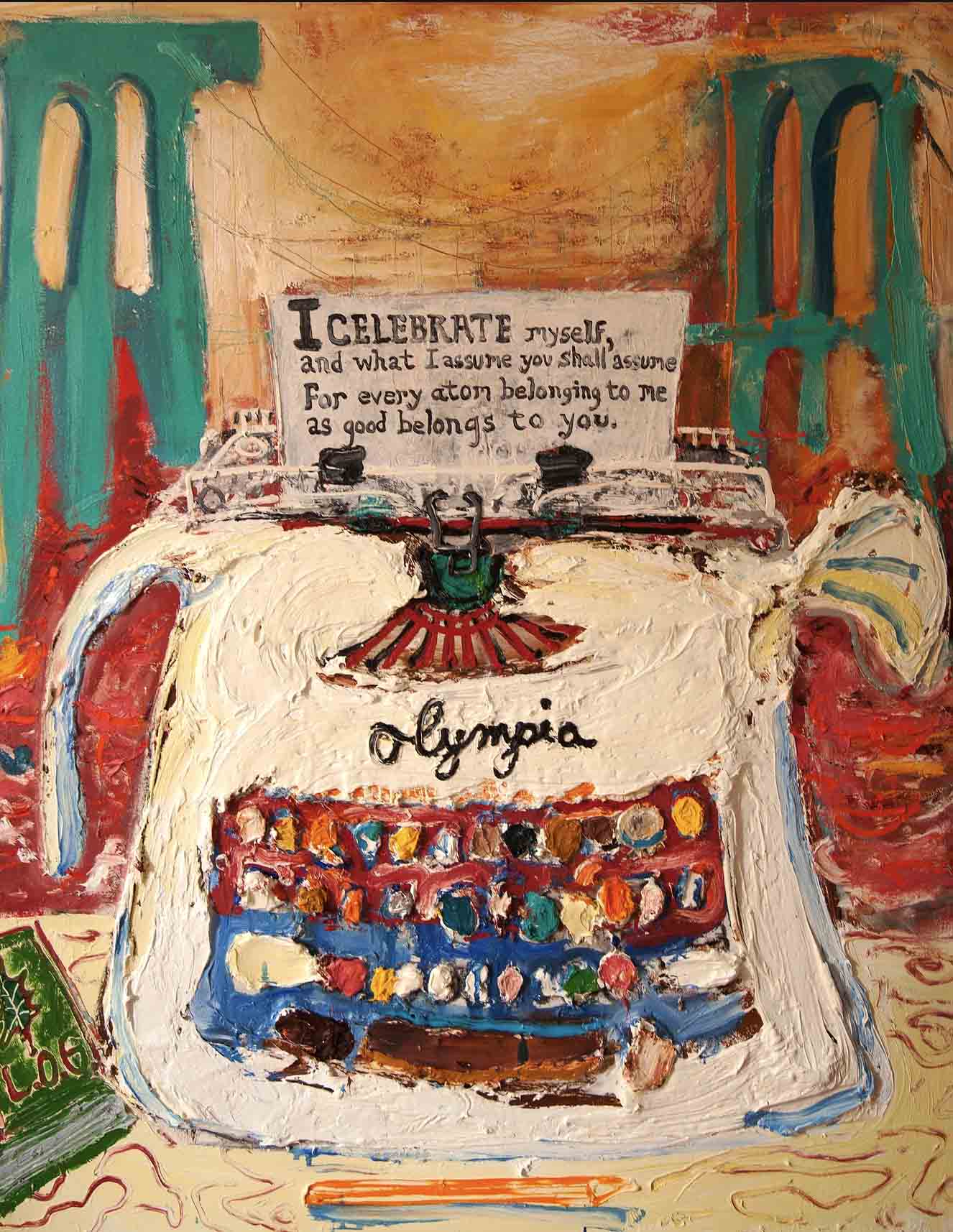
It may be true that we live in one of the safest periods of human history, but fear still seems to find its wily way into our consciousness. In an age of technology, accessibility, innovation and predictability, we still find ourselves anxious, awake at night. Perhaps we are troubled by politics, or perhaps our fears are more abstract. The current exhibition at the Fred Giampietro Gallery “Fear Not” puts these fears right in our faces. The collection of Sam Messer’s highly textured oil paintings have a sly way of eliciting fear from the viewer — the globby paint extruding from the surfaces of his paintings protrude so far out they threaten to intrude in the viewers’ sanctity. While the paintings invoke alarm, they perhaps teach us to confront the things that are keeping us up at night.
The Fred Giampietro Gallery features American contemporary and folk art. “Fear Not” will continue to be exhibited through Dec. 23, 2017. As stated in the show’s press release, “Fear Not’ captures Sam Messer’s “passion for portraits of artists, typewriters, bridges and even tyrants.”
Adam Robertson, who works at the gallery, said that some of these pieces “gave [Messer] the opportunity to sit down at dinner with people who he believes are smarter than him, and then paint their portraits.” The exhibit features impressionist-like, almost surreal depictions of figures including essayist and journalist Garnette Cadogan, as well as artist Jon Serl. While one might expect an artist painting a portrait of another artist to be a reverential act, or a feat of curiosity, these figures in fact have fearful histories of their own.
Serl’s most famous painting was “Between Two Worlds,” an even more surreal and anxiety-inducing version, one might argue, of Edvard Munch’s “The Scream.” In Messer’s portrait, Serl stands meekly with clasped hands amongst an amalgam of begging dogs. His white hair stands in all directions as his gaze is transfixed on something in the distance—however one cannot tell what he’s staring at. The eeriness of his stance and the darkness of the painting’s tone — its gray background, its stark features — brings to mind a little bit of fear.
The painting “Garnette Walking” depicts Cadogan as a looming giant stepping over New York City. His enormous tan shoes step over the Manhattan Bridge. In 2016, Cadogan published an essay called “Walking While Black,” capturing the realities of being black in America and the constant feeling of being on edge associated with anticipated racism. In the portrait, his hands clasp together holding a paper and pencil, and his facial expression is a mix of hope and discomfort. Even while looming over the world, he seems timid and almost restrained.
Perhaps the most relevantly fear-inducing object of the exhibit was a television pressed against the left wall of the gallery, flashing with images of faces, scribbles and fire. On it runs a loop of an animated film by the name of “YEAR OF THE COCK,” illuminating the artist’s reactions toward the first one hundred days of Donald Trump’s Presidency. Throughout the film are pictures from protests, diminutive doodles of President Donald Trump himself, and phrases of fear written out in stop motion, done in a frantic scrawl.
Apart from these portraits of artists and tyrants, Messer’s other motifs — typewriters and bridges — seem to stand on safer ground. Sturdy, secure, reliable — these objects and constructions anchor the exhibit, and reinforce Messer’s directive to “Fear Not.” One painting features lines from Walt Whitman’s “Song of Myself” — a white olympia spews out a sheet reading:
“I celebrate myself, and what I assume you shall assume
For every atom belonging to me
as good belongs to you.”
There is barely any fear to be found in such a wholesome image. The paintings of bridges follow suit, all standing tall and formidably against blue skies. The simplicity of these images evokes a sense of calm very different from the abstract anxiety of Messer’s earlier portraits.
Finally, the exhibit’s title piece, “Fear Not,” is an undaunting and small painting of a yellow typewriter. It stands in the frame with familiarity, its keys in order, its paper in place. On the paper is written FEAR NOT in bold, black lettering. This brings to mind Robert Louis Stevenson’s famous poem:
Fear not, dear friend, but freely live your days
Though lesser lives should suffer. Such am I,
A lesser life, that what is his of sky
Gladly would give for you, and what of praise.
Step, without trouble, down the sunlit ways.
We that have touched your raiment, are made whole
From all the selfish cankers of man’s soul,
And we would see you happy, dear, or die.
Therefore be brave, and therefore, dear, be free;
Try all things resolutely, till the best,
Out of all lesser betters, you shall find;
And we, who have learned greatness from you, we,
Your lovers, with a still, contented mind,
See you well anchored in some port of rest.
Art shows us again and again that even in the fearful, one can find beauty. In confronting our anxieties, perhaps we gain clarity of what it is we are afraid of. We see them from a new perspective. “Fear Not,” in a way, quells one’s fears by bringing them out into the open, putting them under stark gallery light, and allowing us to stand right before them, looking our fears in the face.
Allison Primak | allison.primak@yale.edu







